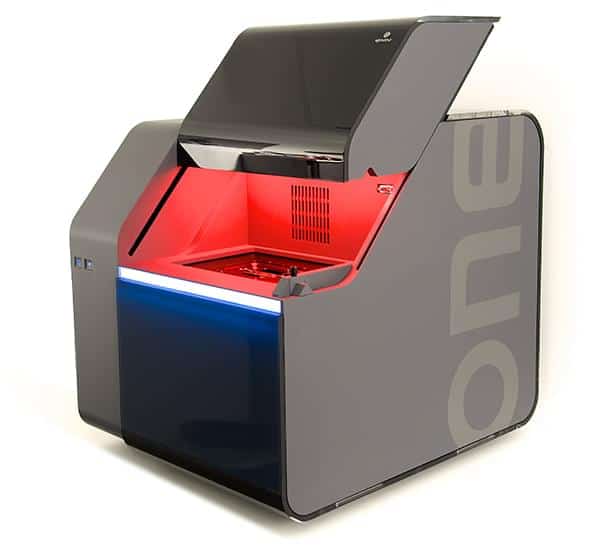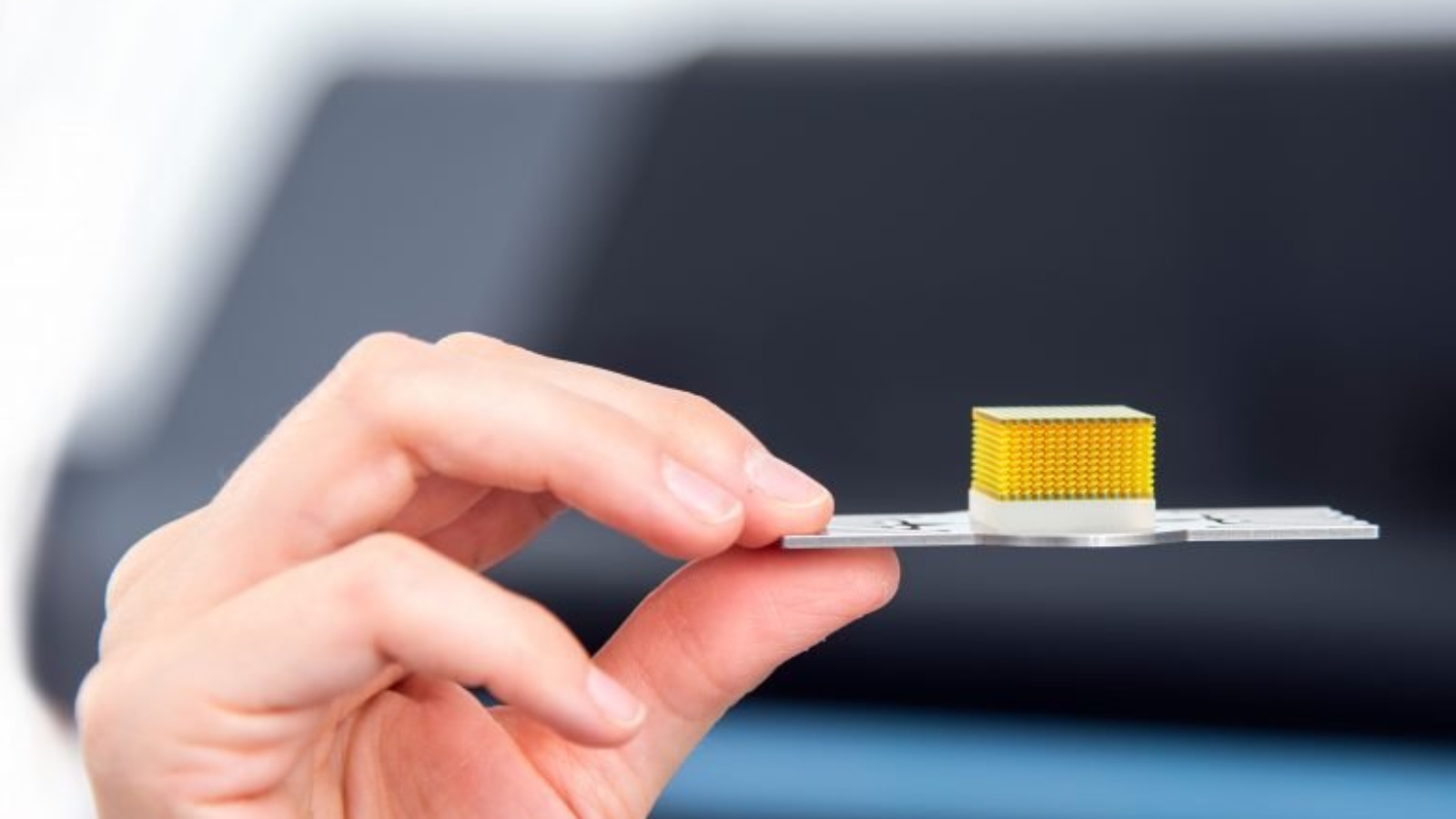Competition is finally starting to pick up in the commercial 2PP nano 3D printing segment. After the segment was long dominated by one company, new systems are now starting to enter the market, including the NanoOne from Austrian firm UpNano, a TU Wien spin-off. Customers from both industry and academia recently acquired NanoOne 2PP 3D printers.
The 2PP 3D-printing system is capable of manufacturing across twelve orders of magnitude at high speed, enabling the fabrication of polymeric microparts from the nano to centimeter range.

Leveraging the versatility of the machine’s design, all orders were individually tuned to customers’ specifications. The key features of the NanoOne are a high-power laser, an optimized optical pathway, the patented adaptive resolution technology, and purpose-developed algorithms for laser scanning.
2-photon polymerization (2PP) 3D-printing is an ultra-precise production technology at the edge of the physically possible. It enables companies to manufacture parts that were, literally, unthinkable a few years ago. At the same time, it is a highly sought-after technology in academic research. So far very few 2PP 3D printing systems were able to meet the requirements of both industry and academia. However, recent sales of the NanoOne-System by UpNano demonstrate that a single versatile system can in fact fulfill a wide range of different specifications.
Manufacturing on Demand
One of the first clients is a European company that specializes in optical applications. The company was looking for a 2PP 3D printing system to manufacture highly transparent components. The high-powered laser of the NanoOne not only allowed to deliver the necessary energy to polymerize this specific material, but UpNano also engaged a team of in-house specialists to develop the material in accordance with exact customer requirements.
Bernhard Küenburg, CEO of UpNano, commented on the successful cooperation and deal: “The NanoOne convinces with an innovative adaptive resolution technology that together with an optimized optical path and smart algorithms utilizes the full power of our exceptionally strong laser. All this allows us to add specific functionalities to the system that meet individual customer requests such as the ones of our industry partners.”
The University of Freiburg in Germany also purchased a NanoOne 3D printer and will exploit the potential of the printing-system in material sciences research. Two other universities, in the DACH Region and in Scandinavia, placed orders for NanoOne systems, following competitive tender procedures. Their motivation to opt for this system was driven by financial constraints that are quite common in the academic domain. A more basic version of the NanoOne was able to meet those expectations as well as all technical specifications requested by the cutting-edge research groups for which these systems have been acquired.
In light of this successful market entry, the company has doubled the floor space in its Vienna headquarters and has appointed industry veteran Henrik Åkesson, as Head of Global Sales. “UpNano not only offers the best technology for speedy 2PP 3D printing over a wide range of dimensions, but it also benefits from a highly motivated and innovative team,” Åkesson said. “We offer our customers a state-of-the-art printing system and services, to help them really get the best out of these machines. It is a great pleasure and honor to be part of this highly spirited team and to demonstrate to the market what 2PP 3D printing can achieve when knowledge and motivation are at the top of their league.”
You might also like:
Incus brings Hammer Lab35 printer into series production: The Hammer Lab35 was first introduced at Formnext 2019, where it served as Incus’s flagship. The startup then garnered some attention for its machine; 2020 saw the system’s uptake.
* This article is reprinted from 3D Printing Media Network. If you are involved in infringement, please contact us to delete it.
Author: Davide Sher


Leave A Comment